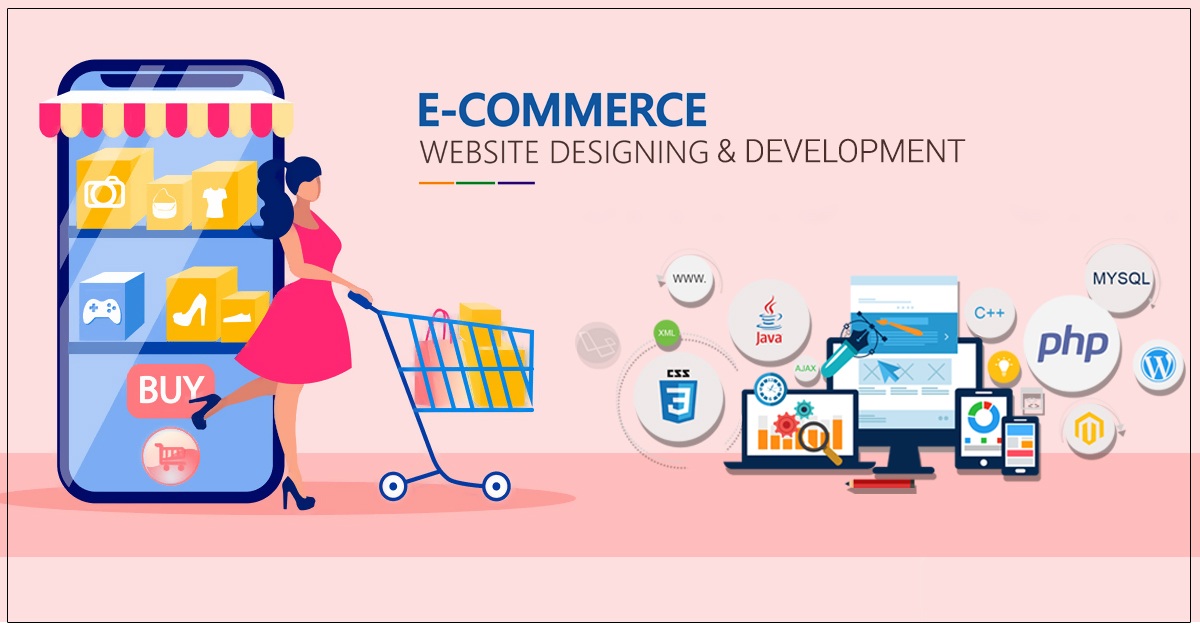- May 11, 2024
- by Mariyam Arshad
- Website development
- 0 Comments
1- Establish Your Objectives:
It’s critical to establish your objectives before you begin developing your e-commerce website. With your internet store, what goals do you hope to accomplish? Are you trying to build your clientele, boost sales, or raise brand awareness? You can build a website that supports your business aims by outlining your goals precisely.
2- Pick the Correct Platform:
The success of your online store depends on your choice of e-commerce platform. Popular choices with distinct functionality and customization possibilities are Magento, WooCommerce, and Shopify. When selecting a platform, take into account elements like scalability, technological proficiency, and budget.
3- Design Your Website:
Getting and keeping clients on your e-commerce website is greatly influenced by the way it looks. Select a simple, intuitive design that draws attention to your items and enhances the purchasing experience. Think about working with a qualified web designer to produce a unique layout that captures the essence of your company.
4- Optimize for Mobile:
It’s critical to make your e-commerce website mobile-friendly because more and more customers are making purchases from their smartphones and tablets. Make sure your website loads quickly and works well on all types of devices.
5- Include Detailed Product Descriptions and High-Quality Photos:
Presenting your products and enticing visitors to buy them requires both thorough product descriptions and high-quality photographs. To assist clients in making well-informed purchasing decisions, provide high-quality photographs and precise, educational explanations.
6- Use Secure Payment Methods:
In e-commerce, security is crucial. To protect sensitive data and encrypt data, make sure your website has an SSL certificate. To gain your clients’ trust, provide safe payment methods like PayPal and credit card purchases.
7- Optimize for search engines:
Getting organic traffic to your e-commerce website requires search engine optimization, or SEO. Improve your website’s search engine ranking by adding relevant keywords to your product pages and content.
8- Integrate Social Media:
By integrating social media, you may expand your audience and increase traffic to your online store. To improve visibility, include social media sharing buttons to your product pages and post about your products frequently on social media.
9- Deliver Outstanding Customer Service:
Promoting repeat business and fostering customer loyalty both depend on providing outstanding customer service. Offer a variety of customer service channels, including live chat, email, and phone, and make sure that any questions from clients are answered right away.
10- Test and Optimize:
After going live, it’s critical to continuously test and do performance optimization on your e-commerce website. Your website’s conversion rate and general performance can be increased by using analytics tools to monitor user behavior and make data-driven decisions.
Conclusion:
In conclusion, meticulous planning, close attention to detail, and continuous optimization are necessary for creating a successful e-commerce website. You can build an online store that not only looks amazing but also gives your consumers a flawless buying experience by following the instructions provided in this blog post. An e-commerce website that is well-designed and optimized can help you expand your online business, draw in more clients, and keep existing ones.





